Tracking tunnels, chew cards and WaxTags© are commonly used to detect predator presence and monitor abundance, but in recent years there’s been a new tool in the conservation kit – the remote camera. Evaluations of its use are showing that it is a tool with a lot of promise and some significant advantages over traditional monitoring methods.
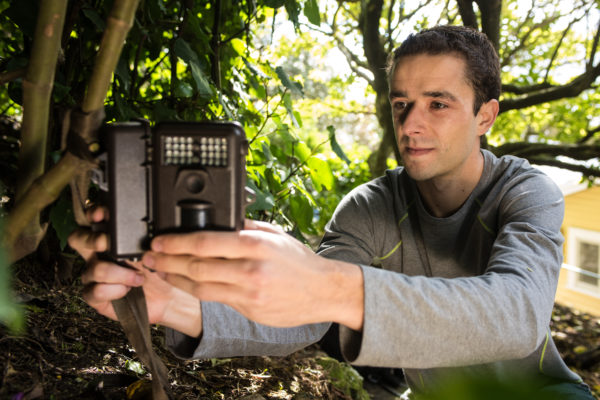
In a research article just made available online through the NZ Journal of Ecology website and not due to be officially published until early 2018, Victoria University of Wellington researchers Victor Anton, Stephen Hartley and Heiko U. Wittmer report on their study comparing the performance of remote cameras and tracking tunnels in an urban setting – the bush areas and backyards of Wellington. The research was carried out over 4 non-consecutive days in 2014 and 2016 and looked at detection rates for several urban predator species, including rats, hedgehogs, mice and possums.
“We deployed passive infrared triggered cameras (Bushnell, model: 119537) and plastic tracking tunnels (500 × 100 × 100 mm; Connovation Limited) at 40 locations in Wellington, New Zealand. Half of these locations were in forested areas (regenerating native forest) and the other half were in residential areas (i.e. backyards and gardens). We set up the cameras to record three still photographs (8 megapixels) per trigger. According to manufacturer’s specifications, the trigger speed of the cameras after being activated by an animal was 0.6 seconds. We set cameras to the highest sensor level, the lowest flash level and a medium shutter speed. We chose a delay of 30 seconds between triggers to avoid collecting an excessive number of additional photos of the same individual and to maximise memory storage. We attached the cameras to trees 50 cm above the ground and with a 20° downward tilt. The field of detection of our cameras was approximately 2.6 m2 at ground level.”
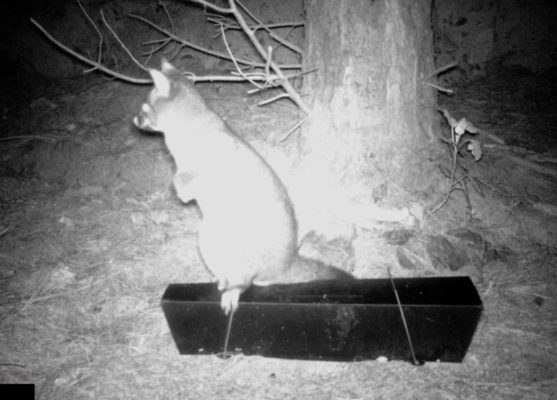
Tracking tunnels were deployed nearby within the camera’s field of view. In order to minimise the known aversion of rats to anything new (less of a problem with cameras which don’t require any direct rat contact), the tracking tunnels were left in place for at least 14 days before each recording session.
“We deployed tracking tunnels 1.5 m in front of the cameras baited with peanut butter in the middle and left them overnight on two occasions. To estimate how the use of bait influences the detectability of species by remote cameras, we also inserted unbaited tracking cards into the tracking tunnels and recorded photos on two other occasions.”
So how did tracking tunnels and remote cameras compare when it came to detecting urban predators?
“On average, cameras detected significantly more hedgehogs (Erinaceus europaeus) and rats (Rattus spp.) than tracking tunnels, and their images could be used to identify rats to the species level in 50% of detections. Cameras also detected more possums (Trichosurus vulpecula) but missed recording mice (Mus musculus) on some occasions where tracking tunnels detected them, and vice-versa.”
Interestingly, the camera footage also revealed why not all of the rats were being detected in tunnels.
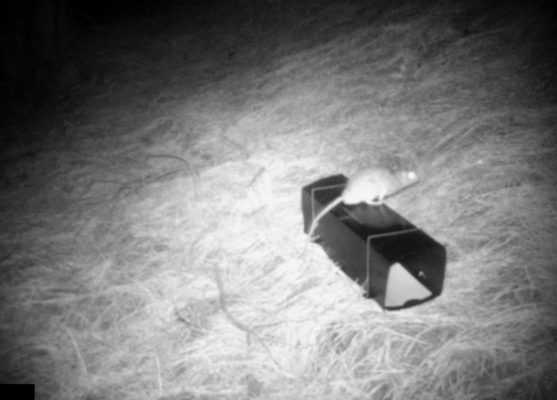
“During some occasions, cameras recorded rats interacting with the tracking tunnels, but not entering them. Abundance of other food sources and the neophobic character of the animals may have caused the lower detection rates provided by tracking tunnels.”
Tracking tunnels have a number of limitations when it comes to monitoring multiple species. They can’t, for example, identify rats to species level and detection can be biased depending on which species gets to the tunnel first. Weather, food availability and the bait used can all influence which predators interact with the monitoring tunnel. All of these detection inconsistencies limit the comparisons that can be made about relative densities of different species and/or in different ecosystems.
Remote camera footage could, however, be used to distinguish between ship and Norway rats in the Wellington research project.
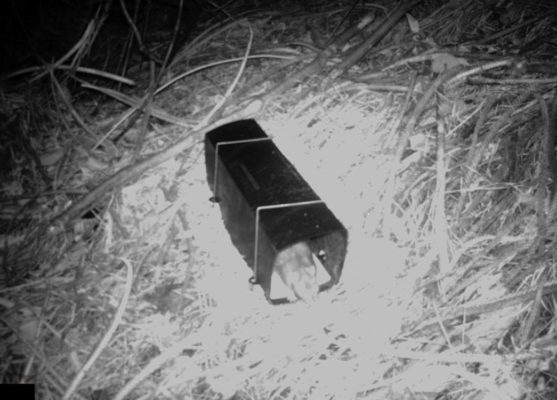
“We identified rats to species level in 12 of the 24 detections provided by the cameras. Ship rats (Rattus rattus) were detected 11 times while Norway rats (Rattus norvegicus) were detected once.”
So what were the tracking tunnels missing?
“Remote cameras detected significantly more hedgehogs and rats than tracking tunnels; indeed, remote cameras recorded all hedgehogs and rats detected by the tracking tunnels. Tracking tunnels failed to detect some animals recorded by the cameras. For example, tracking tunnels missed recording seven of the ten possums, 13 of the 26 hedgehogs and 11 of the 24 rats detected by cameras.”
Both methods had issues with detecting mice.
“Both tracking tunnels and remote cameras occasionally failed to record mice detected by the other device. Tracking tunnels missed detecting mice during 5 of the 12 trap-nights that cameras recorded mice; but, cameras missed detecting mice during 8 of the 15 trap-nights that tracking tunnels recorded mice.”
Bait had very definite benefits in both camera and tunnel monitoring. It’s well worth the peanut butter sacrifice.
“The use of peanut butter as bait increased by 363% and 238% the detection rates of rats and mice respectively, regardless of device.”
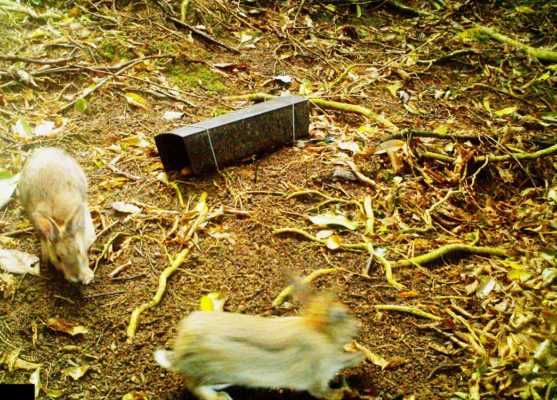
So remote cameras are good at detection – but they do have disadvantages – including the very time-consuming task of analysing the resulting images.
“The main limitation is the labour required to classify the footage or photos. However, using public participation (e.g. https://identifyanimals.co.nz) and automatic animal identification software may minimise the time required to collate data provided by cameras.”
Another disadvantage of many infra-red based motion cameras is their inability to detect ectothermic animals such as lizards and insects, whereas tracking tunnels do record the footprints of these species. Overall, however, the researchers recommend remote cameras as a monitoring method depending on the monitoring situation.
“Based on our results we recommend that conservation managers deploy remote cameras if the objective is to simultaneously monitor multiple invasive mammals and/or if high sensitivity to rat presence is required. Tracking tunnels on the other hand should be considered if the objective is to index rodents (rats and mice) in comparison to other monitoring schemes using the national standard method.”
The full research report is freely available through the NZ Journal of Ecology website:
Evaluation of remote cameras for monitoring multiple invasive mammals in New Zealand (2018)

